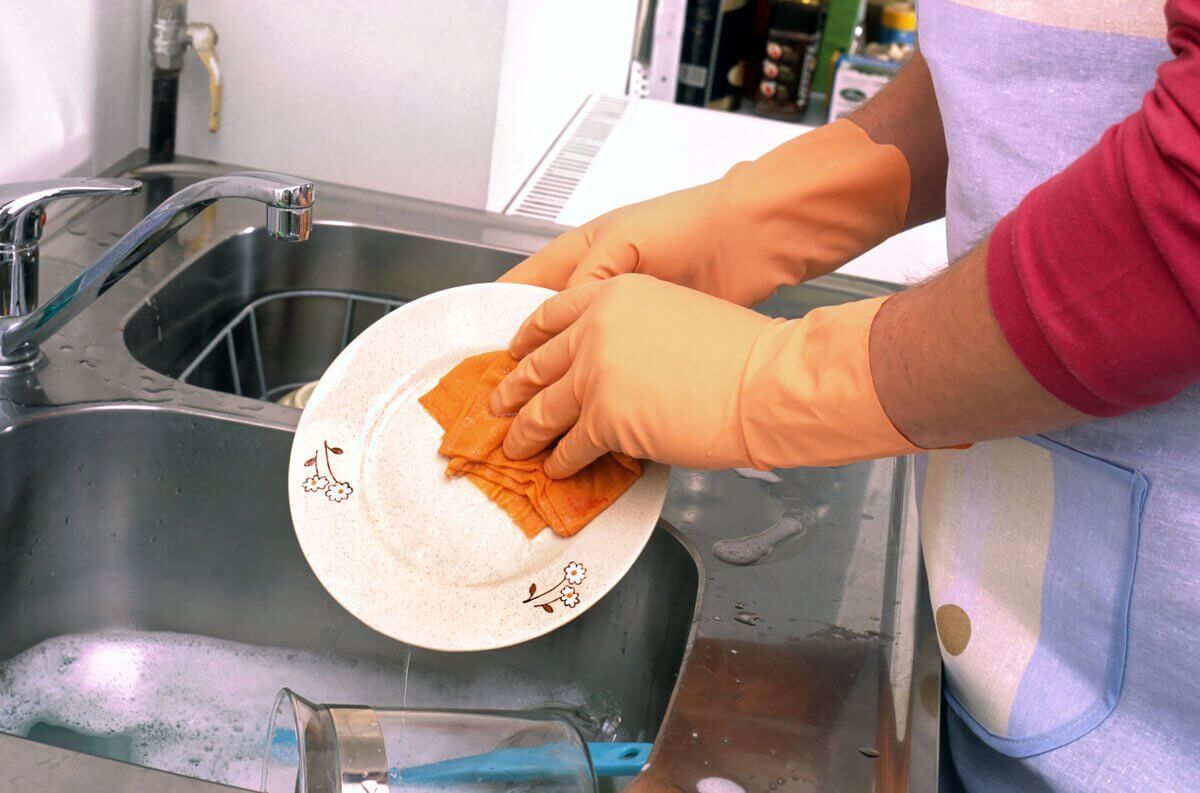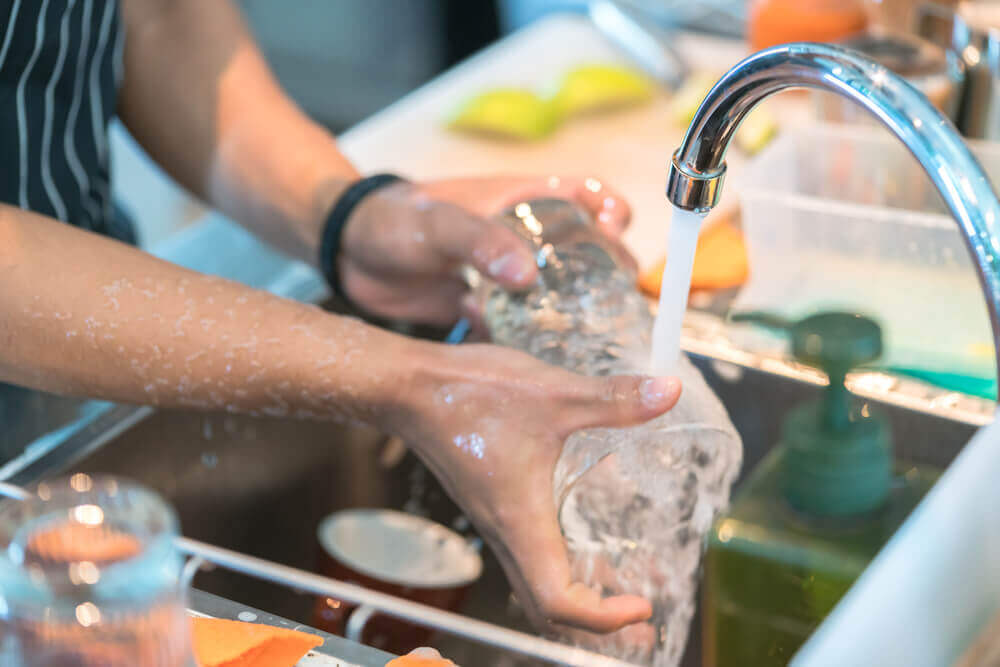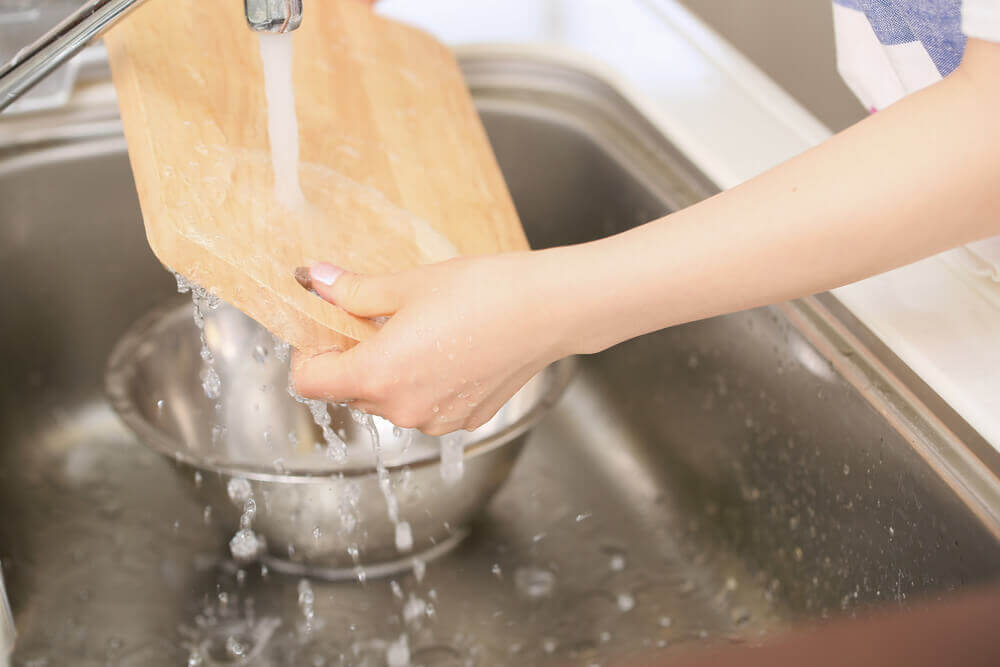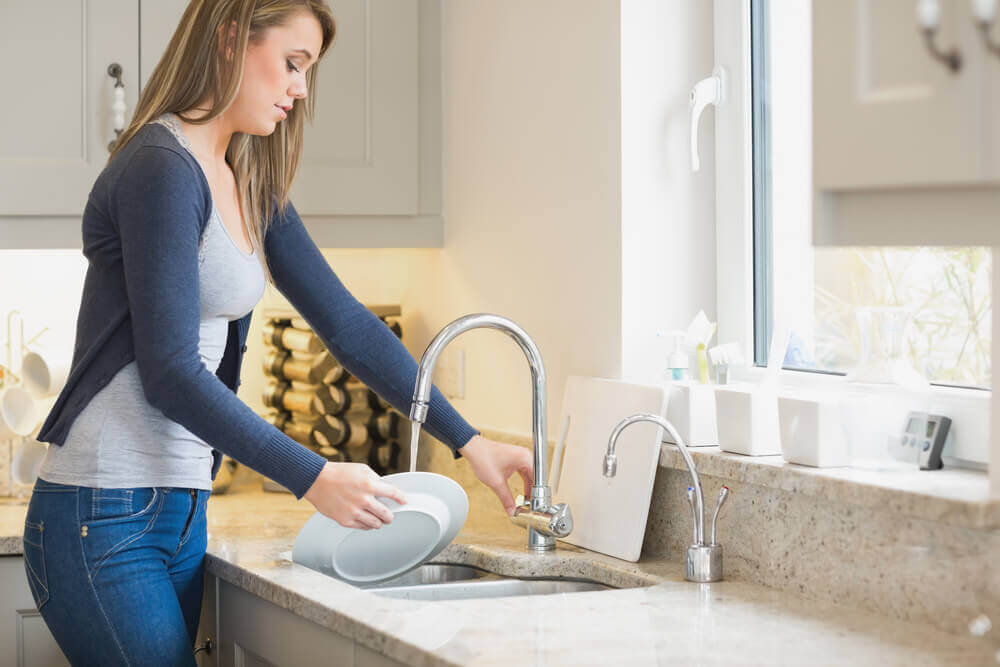The 8 Most Common Mistakes When Washing Dishes

Although we may think that our kitchen is free of bacteria after cleaning, in many cases that isn’t the truth.
It’s not just the sponge in our sink that is full of germs. In addition, there are many other mistakes when washing dishes that we make that cause too much residue and spread germs.
TCharles Gerba is a microbiologist at the University of Arizona. After numerous studies, he has come to the conclusion that 50 to 80% of all diseases caused by contaminated food originate at home.
These pathogens cause 6.5 million cases of gastroenteritis per year.
The most common mistakes we make while washing the dishes
1. Not using the right soap
It’s a very common mistake not to choose the right soap, or to use a lot of product.
By using too much soap, there may be residue that covers the dishes and ends up in the food.
- All that’s needed is hot water and soap.
- Read the labels of cleaning products and follow the instructions that indicate the proportion you must dissolve in water.
2. We waste a lot of water

- If you have two basins, fill them with hot water and put the plates and cutlery to soak.
- You can also put them in a soaking basin and then wash and rinse them.
It’s important to turn off the faucet while you wash each dish individually. You can use a small bowl of water to wash each dish. That way you do not waste a lot of clean water.
We recommend you read: 10 Tricks for Eliminating Odors From the Kitchen
3. Use a plastic sponge
The highest levels of contamination in the kitchen can be found in sponges and dishwashers. These are a perfect home for thousands of bacteria like E. coli and Salmonella.
That’s why it’s a good idea to use a sponge with natural fibers. After scrubbing, hang it to dry completely. Also, it is recommended to change it every week.
4. Not washing glasses and knives properly

5. Not washing your hands first
Hands can be a source of contamination of bacteria and viruses.
Before washing dishes or placing them in the dishwasher by hand, it’s important to wash your hands with soap and warm water.
6. Beware of cutting boards

- It’s a mistake to wash them with a sponge and soap as we tend to do. That way, they’re not properly cleaned.
7. Washing in a dirty sink
Your kitchen sink could have more germs than your toilet.
- It is recommended to clean the sink daily with vinegar and baking soda or with vinegar and salt.
- This way, everything will be disinfected when washing the dishes without accumulating new bacteria.
See also: 5 Natural Baking Soda Remedies That You Need to Know
8. Not removing food or pre-rinsing

- First, discard all the food particles from the dishes in a garbage bin. You can use a spatula to remove all the remains of food.
- Then, place all the dishes and cutlery in hot water to remove the residues and clean them.
One mistake we make is not to remove the food particles, so they’re all over the sink.
Tips for optimally washing dishes
- Use hot water when washing and put on rubber gloves.
- Leave the utensils that have touched raw meat for last: this way you will avoid cross contamination.
- Use a clean, dry cloth to dry the dishes and review it at this time.
- You can use lemon and salt to disinfect the wooden cutting boards.
It is important to consider all of these points in order to prevent diseases caused by the transmission of germs. In addition to taking care of our health, our tableware will look brand new.
All cited sources were thoroughly reviewed by our team to ensure their quality, reliability, currency, and validity. The bibliography of this article was considered reliable and of academic or scientific accuracy.
- Forbes. (2018) Study: Your Kitchen Sponge Has More Germs Than Your Toilet. https://www.forbes.com/sites/brucelee/2017/08/05/study-your-kitchen-sponge-has-more-germs-than-your-toilet/#2294cc2a5a0e
- OUTGAMIE COUNTY. (2009). Contaminación Cruzada. Health and Human Services. Public Health Division.
- Limpieza, P. D. E. (2012). Limpieza y desinfección Cap.7. Instituto Nacional de Aprendizaje. https://doi.org/10.1016/B978-84-458-1898-5.50007-9
This text is provided for informational purposes only and does not replace consultation with a professional. If in doubt, consult your specialist.








